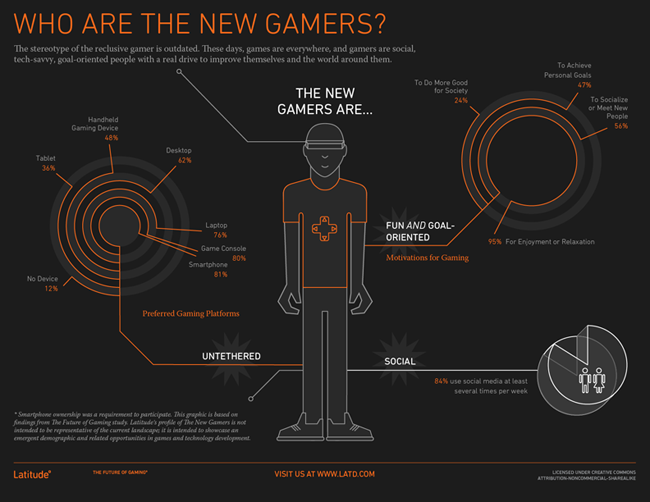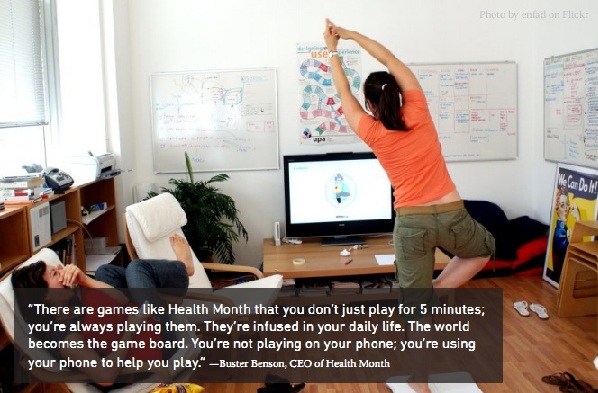It should be no surprise that gaming is changing drastically and this series of surveys and studies by Latitude helps to illustrate just what the future of gaming might look like. From the 8-bit NES to the 128-bit powerhouse PS2, gaming didn’t change all that much. Graphics changed, absolutely, and 3-dimensional graphics served to create new genres and somewhat new ways of playing. Games became more complex and controllers featured new buttons, but it was the Nintendo Wii and its motion controls that really made the industry take notice and think of how gaming could truly evolve rather than just advance. Since then we’ve seen various takes on motion controls, ranging from physical controller movement to the player’s body movement and later a struggling 3D gaming boom led by the Nintendo 3DS.
On the casual gaming end, companies like Zynga and their mega-hit Farmville show that not all gamers need the latest console or a shiny new GPU for their PC to enjoy the pastime. Where it goes from there is hard to tell, but Latitude surveyed 290 smartphone owners to get some idea.

According to the data, the “new gamer” plays games on their smartphone, with 81% saying they do. Games like Angry Birds are cheap and easily accessible to both experienced gamers and people who might not even consider themselves gamers. Still, 80% of those surveyed play on a game console, so there’s obviously plenty of overlap, and laptop/desktop PC gamers come in at 76%/62% respectively. As one would expect, gamers say they play for “enjoyment or relaxation” with a 95% agreement, but 56% say they also play to socialize and meet new people. 84% of gamers also use social media like Twitter or Facebook at least several times a week, showing that not only is there a huge market for games on social networking sites, but that gamers aren’t as anti-social as the stereotype continues to suggest.
As for the future of gaming, 71% of those surveyed like the idea of playing games through body movement and gestures and 56% would like objects which can sense when they’re being interacted with, something which might be similar to tech utilized in the Microsoft Surface. 53% are still waiting for some degree of virtual reality, such as an augmented reality setup where virtual environments or content can be overlaid onto the real world. Last was a survey about gaming as a part of society. 75% surveyed said they’d like gaming to be implemented in learning and education, with slightly fewer wanting games related to personal wellness and healthcare. It’s clear that gamers want games to be enjoyable and fun, but also to have some sort of impact beyond that, such as learning something new or improving themselves. Sports and fitness games can help gamers get in better shape, games like Rock Band 3 have the potential to aid in learning a real instrument, and I would imagine there’s also a market for language-learning games that build off of successful software like Rosetta Stone.
The Future of Gaming: a Portrait of the New Gamers from latddotcom on Vimeo.
For some other ideas of future gaming technology, check out the XIO Gaming Exoskeleton or the Disney Tactile Feedback Brush.











